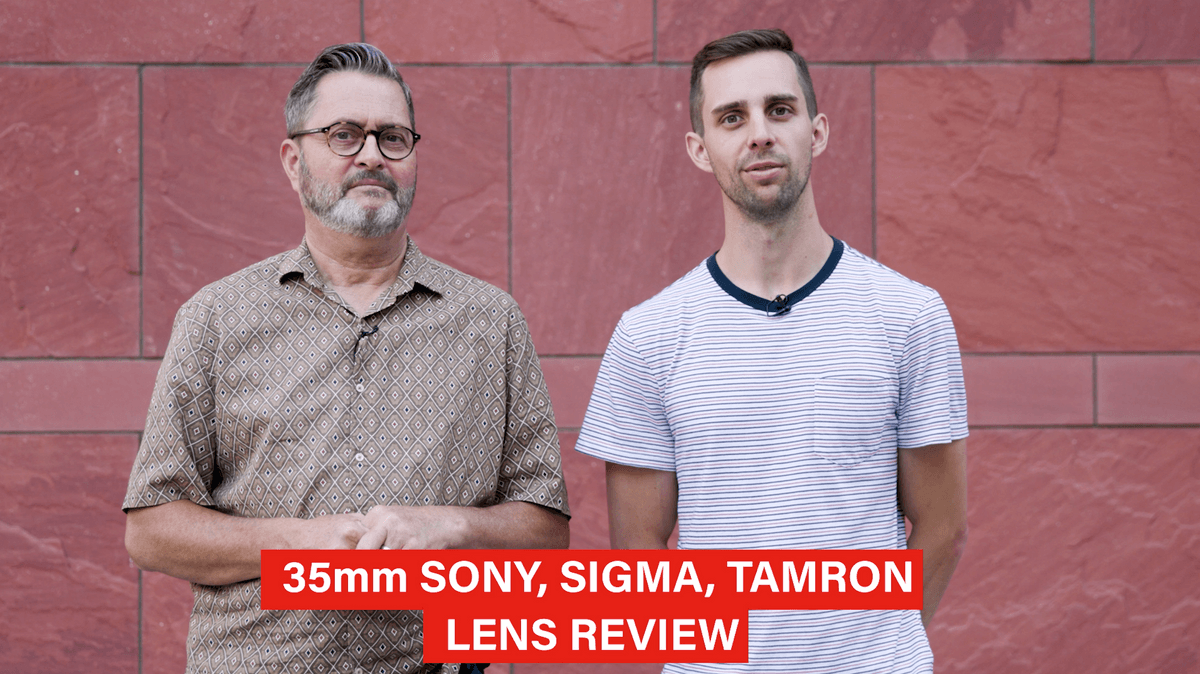 We compare the Sigma, Sony and Tamron 35mm Lenses. Do native lenses make a difference? Which is better? Are expensive lenses worth it? Let us know what you think after watching this video.
We compare the Sigma, Sony and Tamron 35mm Lenses. Do native lenses make a difference? Which is better? Are expensive lenses worth it? Let us know what you think after watching this video.
Can aftermarket lenses in the 35mm category for Sony be as good as Sony’s lenses?
Let’s find out.
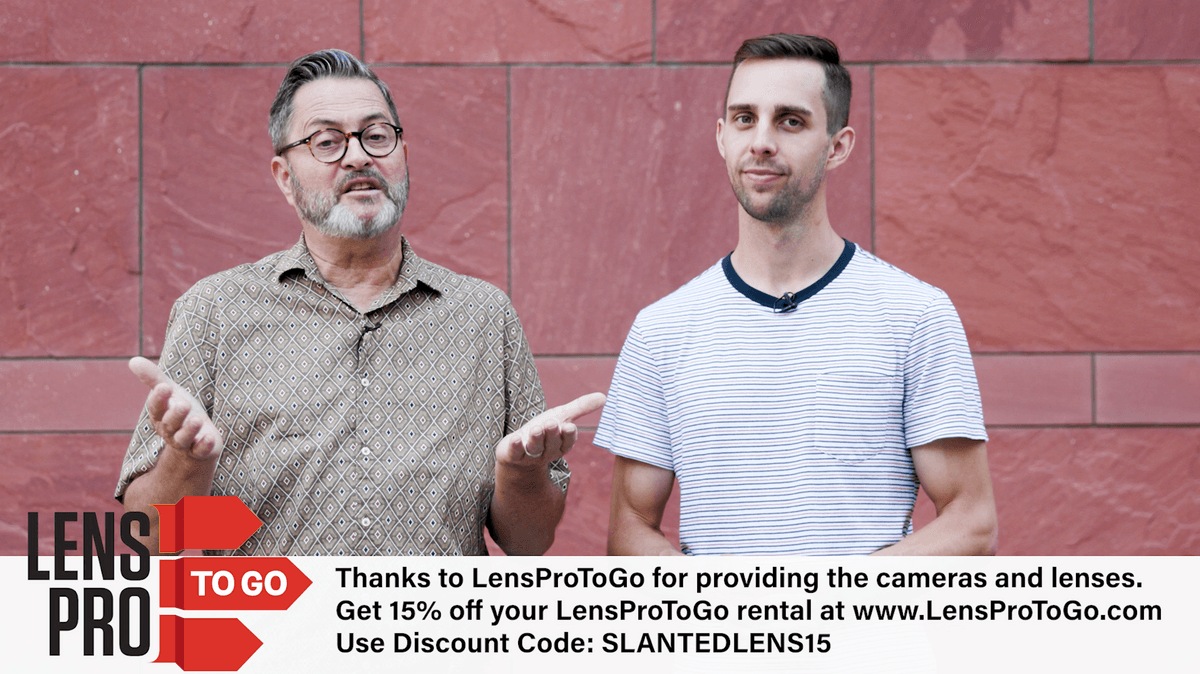 Thanks to LensProToGo for providing the camera and lenses for this comparison!
Thanks to LensProToGo for providing the camera and lenses for this comparison!
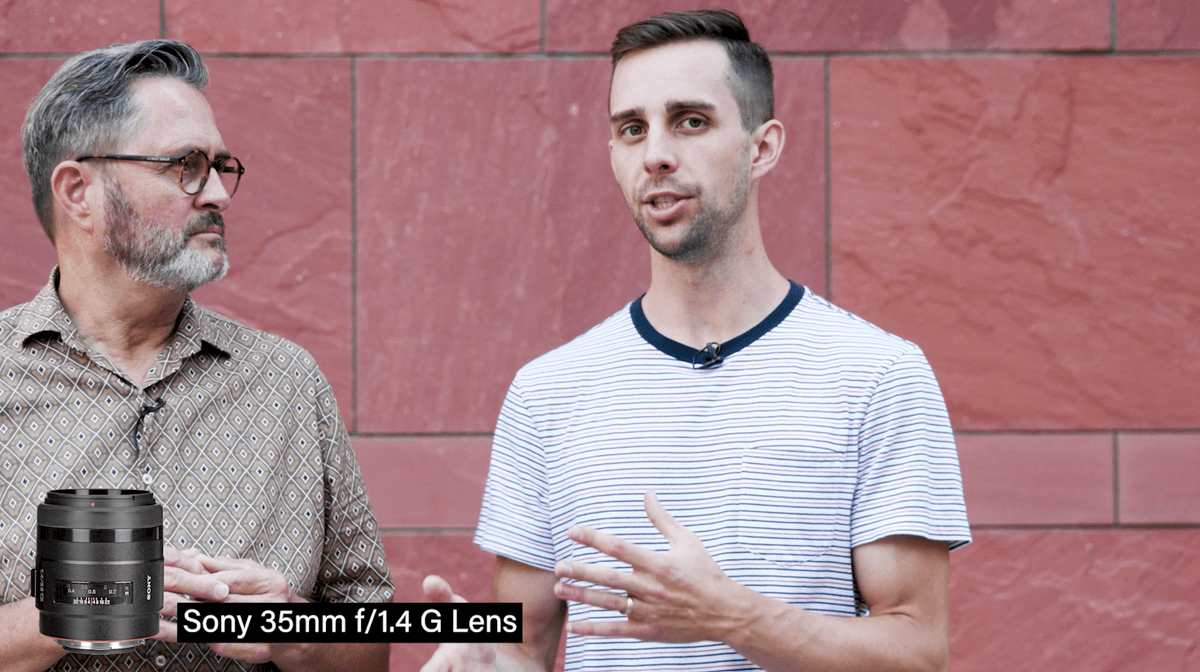 Today we’re going to look at three different 35mm lenses for Sony mount. We get criticized every time we use an off brand or a third party lens when we’re doing camera comparisons. Sometimes we make that decision because we think they’re sharper and better lenses.
Today we’re going to look at three different 35mm lenses for Sony mount. We get criticized every time we use an off brand or a third party lens when we’re doing camera comparisons. Sometimes we make that decision because we think they’re sharper and better lenses.
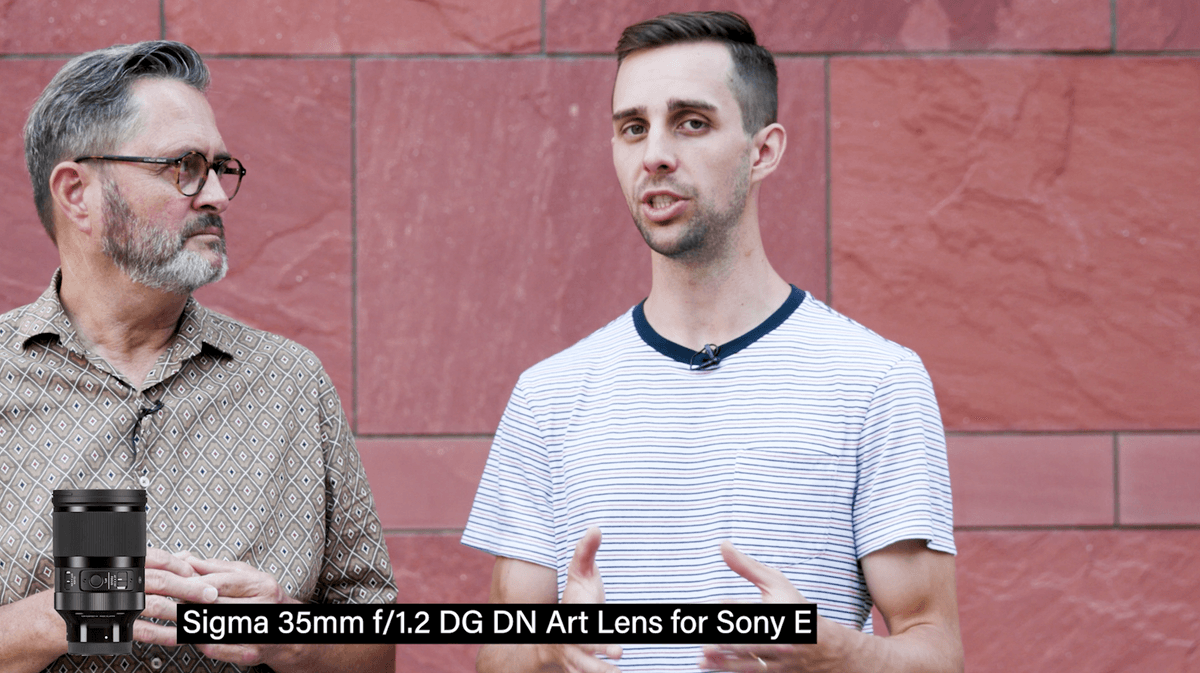 So we have the Sony brand 35mm 1.4, which is great lens. We’re going to compare that to the Sigma 35mm 1.2 art lens, and then we’re going to throw in the Tamron 35mm 2.8.
So we have the Sony brand 35mm 1.4, which is great lens. We’re going to compare that to the Sigma 35mm 1.2 art lens, and then we’re going to throw in the Tamron 35mm 2.8. 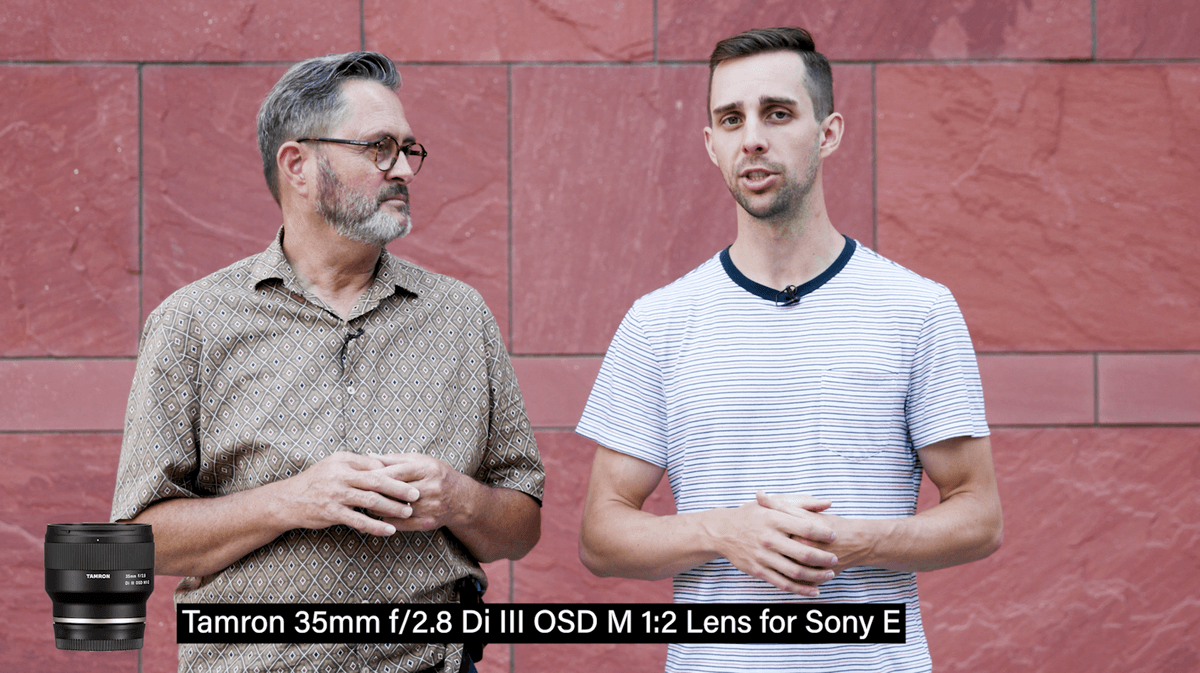 It’s an affordable lens, it’s much smaller and made of somewhat different materials. It’s only a 2.8, but it’s less than a fourth of the price of the other two lenses.
It’s an affordable lens, it’s much smaller and made of somewhat different materials. It’s only a 2.8, but it’s less than a fourth of the price of the other two lenses.
 The reality is, when you look at three lenses like this, they are going to be different and they’re going to fit different individual’s needs based on your needs, your budget and what you’re trying to accomplish. So let’s get to it. Let’s take some Images. Let’s see what we got. Disclaimer up front. I shoot with Tamron lenses. Tamron is a sponsor of ours. But we are going to show you images and we feel like we’re going to give you an unbiased opinion about these three lenses, which scares me just a little bit.
The reality is, when you look at three lenses like this, they are going to be different and they’re going to fit different individual’s needs based on your needs, your budget and what you’re trying to accomplish. So let’s get to it. Let’s take some Images. Let’s see what we got. Disclaimer up front. I shoot with Tamron lenses. Tamron is a sponsor of ours. But we are going to show you images and we feel like we’re going to give you an unbiased opinion about these three lenses, which scares me just a little bit.
Also, we originally were not going to include the Tamron, because we were just wondering about how the Sigma and Sony compared to begin with. And then at the last second, we said, “Let’s throw the Tamron in”. So this wasn’t concocted as some sort of Tamron pitch. Not at all.
I just felt like it was a disadvantage for Tamron being a $350 lens versus a $1500 lens. How is that fair? But so here we are, we’re back in the studio, we’re looking at the images we shot on these 35mm lenses.
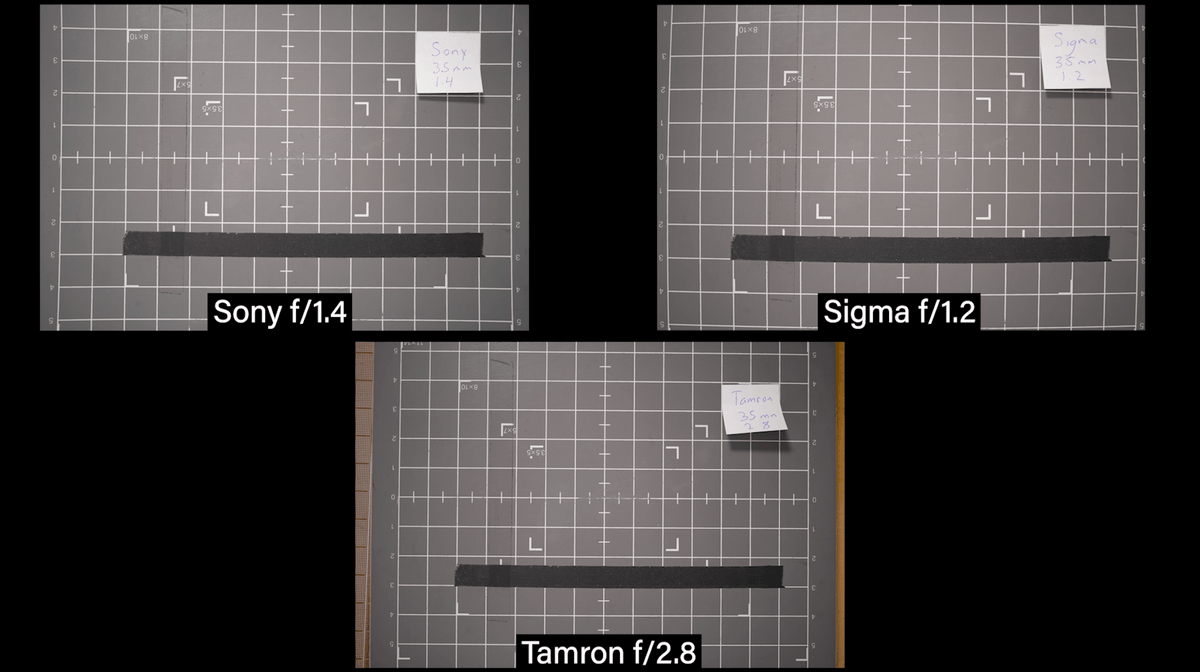 The first thing we did is I tried to square my camera as much as possible to the bed of a copy camera stand. And then we shot just the grid of the copy camera to look for sharpness and also to look for any kind of barrel distortion and just see if there’s any distortion at all.
The first thing we did is I tried to square my camera as much as possible to the bed of a copy camera stand. And then we shot just the grid of the copy camera to look for sharpness and also to look for any kind of barrel distortion and just see if there’s any distortion at all. 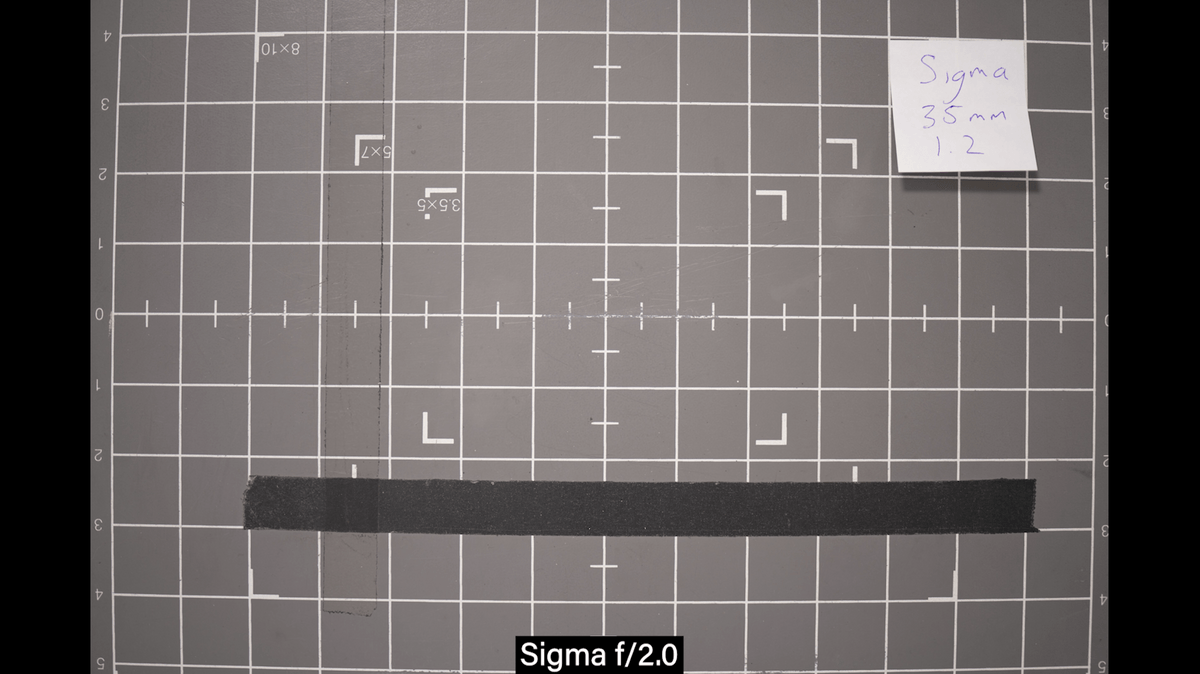 I saw immediately that the Sigma bowed. You see the lines bow and there’s some major distortion with that lens. The barrel distortion is actually pretty surprising with the Sigma. You do see a little bit of pin cushioning on the Sony that we have here. Both these lenses are wide open, but the Sigma does barrel distort quite a bit.
I saw immediately that the Sigma bowed. You see the lines bow and there’s some major distortion with that lens. The barrel distortion is actually pretty surprising with the Sigma. You do see a little bit of pin cushioning on the Sony that we have here. Both these lenses are wide open, but the Sigma does barrel distort quite a bit.
Now we’re looking at the Tamron lens, which is a $350 lens. (Now on sale for $299.)
There’s not really any bowing or barrel distortion at all. The only thing I noticed about the Tamron is that it is slightly wider than the other two lenses. We see a larger field of view with the Tamron 35mm. It is very sharp and is not bowing at all.
 So let’s look at these 1.2 and 1.4 apertures. These are the Sony and the Sigma wide open. The center sharpness is a little soft. I think the Sony is worse, but both of them have a little bit of softness to them because they are wide open. That’s what you expect.
So let’s look at these 1.2 and 1.4 apertures. These are the Sony and the Sigma wide open. The center sharpness is a little soft. I think the Sony is worse, but both of them have a little bit of softness to them because they are wide open. That’s what you expect.
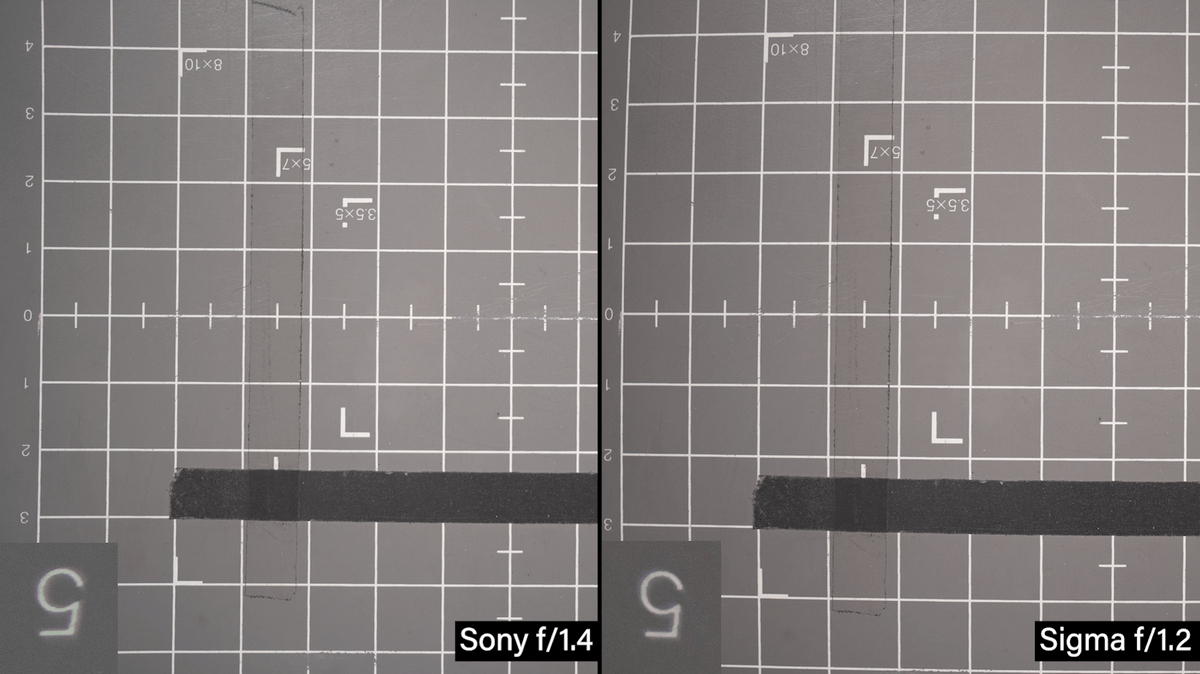 Then let’s go here to the corner, this lower hand five. Again the Sigma seems sharper to me.
Then let’s go here to the corner, this lower hand five. Again the Sigma seems sharper to me.
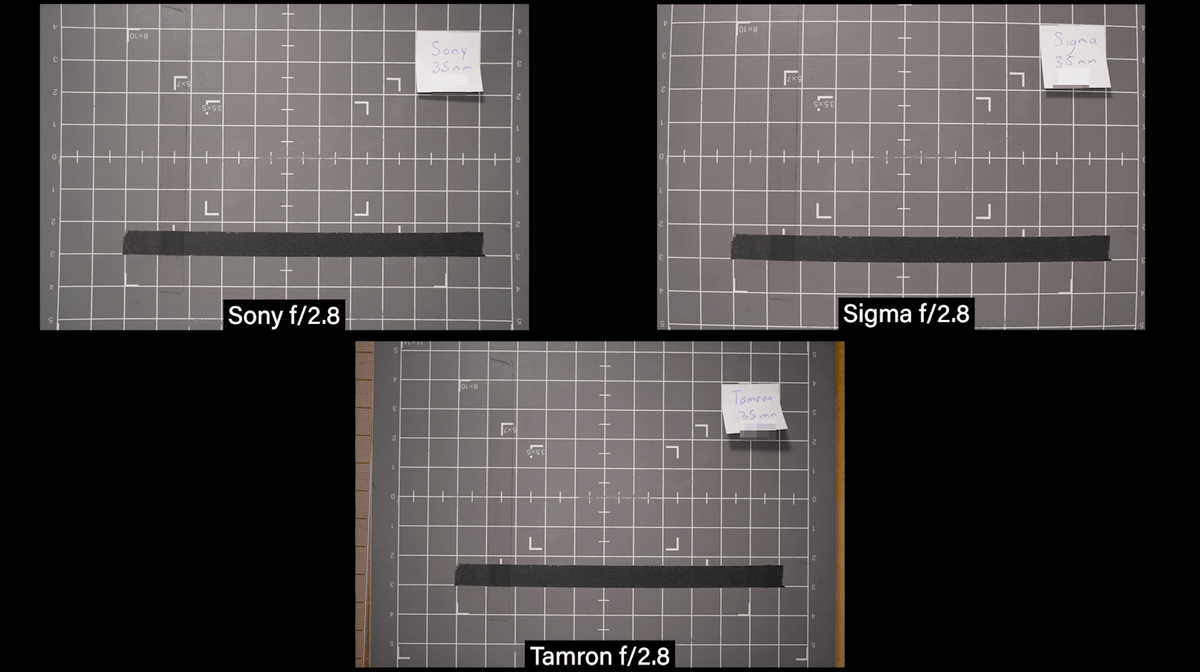 Let’s jump up to 2.8. So we get all three lenses in here. Color wise, the Sigma has this magenta shift to it. It does look a little bit warmer. Sony has a greenish tint, which is what we expect. The Tamron is probably the most neutral. It’s a little bit magenta. At 2.8 the Sigma and Sony are at their optical f-stop. They are hitting their peak performance here.
Let’s jump up to 2.8. So we get all three lenses in here. Color wise, the Sigma has this magenta shift to it. It does look a little bit warmer. Sony has a greenish tint, which is what we expect. The Tamron is probably the most neutral. It’s a little bit magenta. At 2.8 the Sigma and Sony are at their optical f-stop. They are hitting their peak performance here. 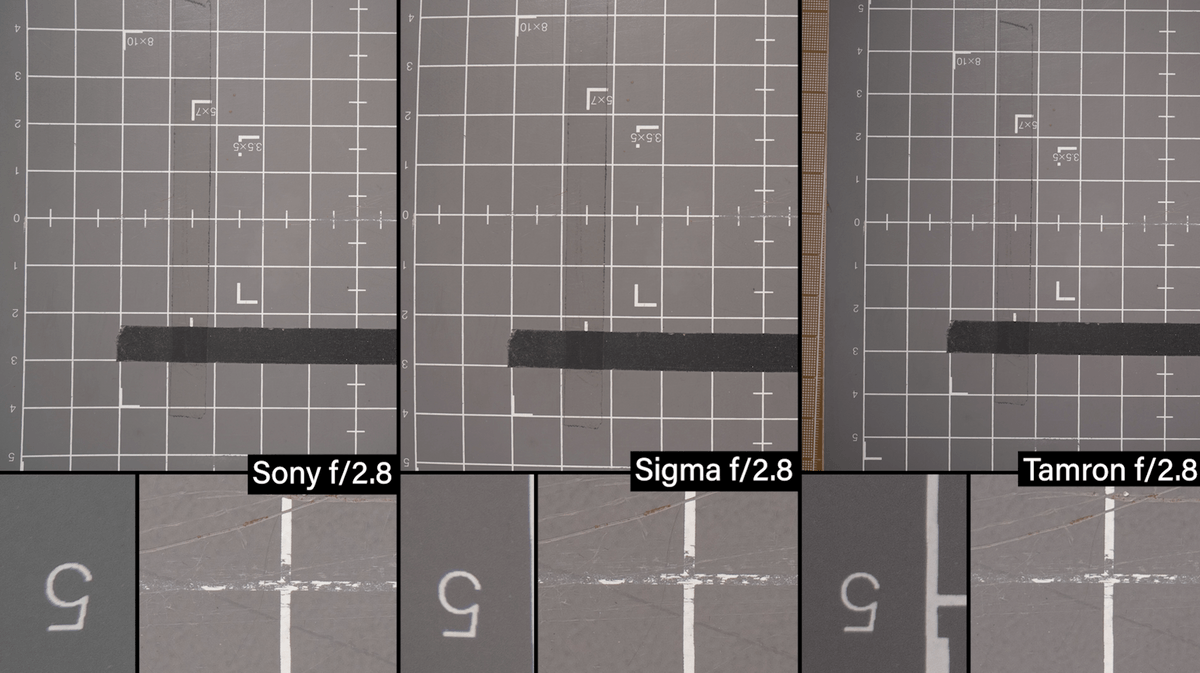 The Sigma is tack sharp The Sony, again, a little bit softer, but not as bad. They’re doing pretty good. The Tamron also looking pretty good. To be honest the Tamron looks about as good as the Sony does. Obviously, the Tamron has a little bit of an advantage here because the five isn’t quite in the corner. Yet we’re still on the edge and it’s still really sharp. I feel like it’s about the same as the Sigma is here.
The Sigma is tack sharp The Sony, again, a little bit softer, but not as bad. They’re doing pretty good. The Tamron also looking pretty good. To be honest the Tamron looks about as good as the Sony does. Obviously, the Tamron has a little bit of an advantage here because the five isn’t quite in the corner. Yet we’re still on the edge and it’s still really sharp. I feel like it’s about the same as the Sigma is here.
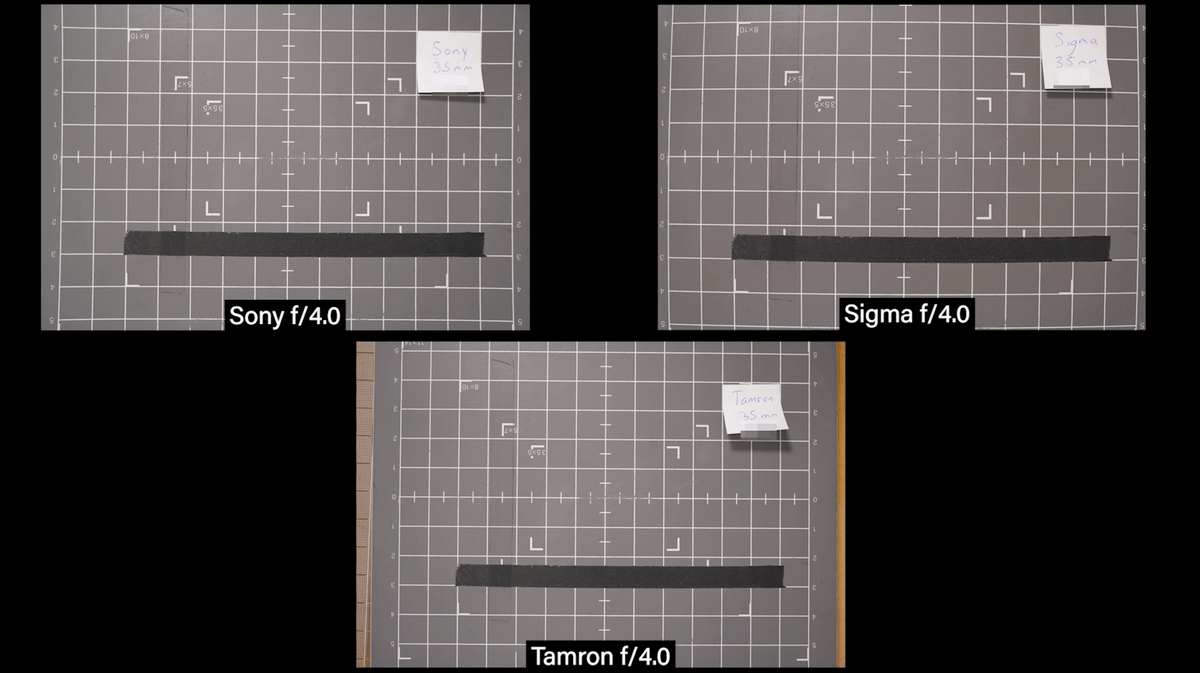 The f/4 should be about optimal. You see it in the Sigma immediately. It’s very sharp and clear. Much clearer than the Sony. The Sony is not looking great. The Tamron is looking pretty good it’s in between the Sony and the Sigma.
The f/4 should be about optimal. You see it in the Sigma immediately. It’s very sharp and clear. Much clearer than the Sony. The Sony is not looking great. The Tamron is looking pretty good it’s in between the Sony and the Sigma. 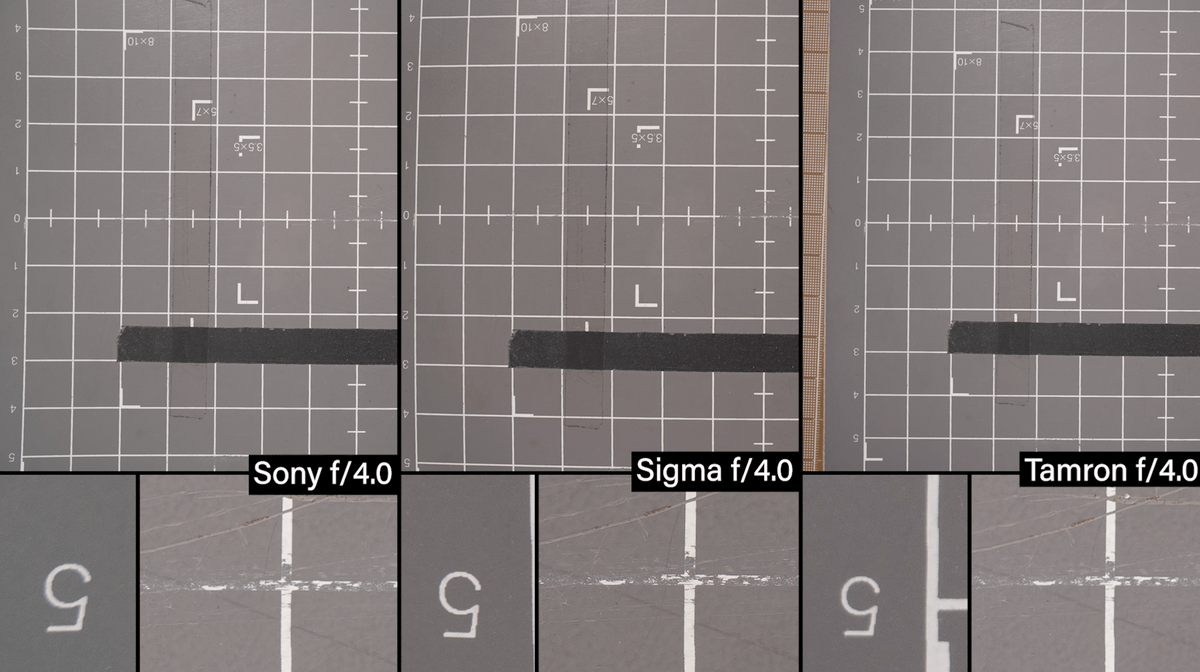 If we go down to the corner this five is perfectly sharp on the Sigma. The Sony is still not performing super well. The Tamron is pretty sharp maybe not quite as sharp as a sigma but man, it’s certainly competing with the Sony. It is way better than the Sony.
If we go down to the corner this five is perfectly sharp on the Sigma. The Sony is still not performing super well. The Tamron is pretty sharp maybe not quite as sharp as a sigma but man, it’s certainly competing with the Sony. It is way better than the Sony.
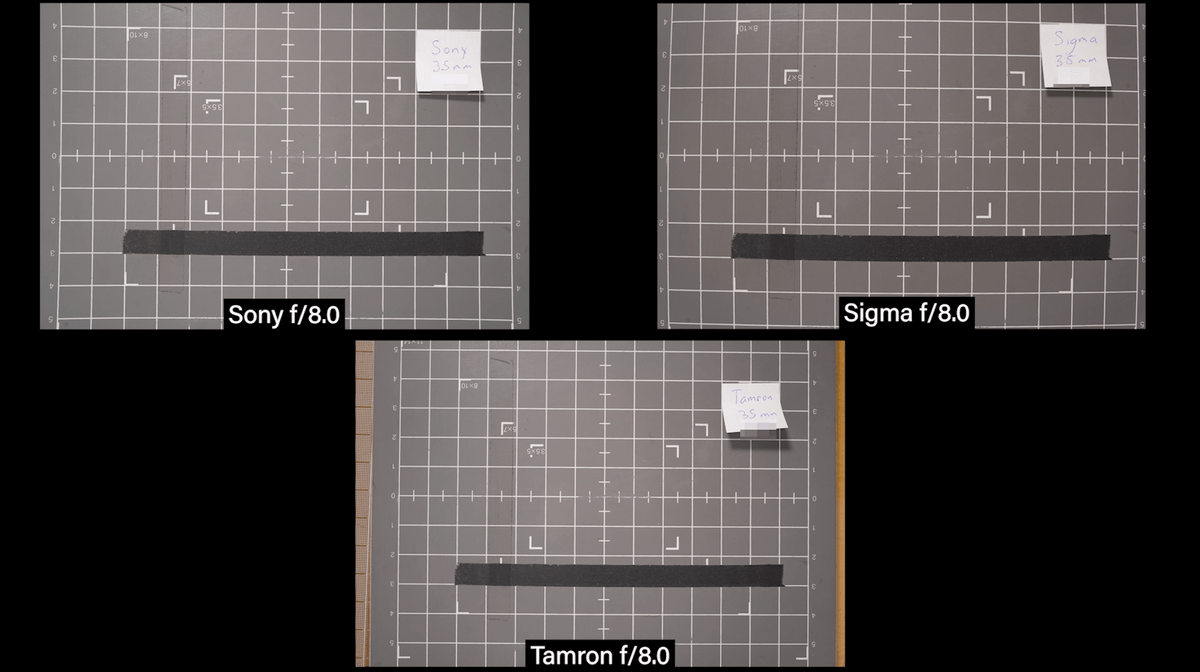 So let’s jump ahead to f/8 so we don’t bore you with every single aperture value. They are all doing pretty well. I honestly think the Sony is looking better now at f/8 than it was before. The Tamron is maybe a little better. They are all looking pretty similar. Look at the 5 in the corner here.
So let’s jump ahead to f/8 so we don’t bore you with every single aperture value. They are all doing pretty well. I honestly think the Sony is looking better now at f/8 than it was before. The Tamron is maybe a little better. They are all looking pretty similar. Look at the 5 in the corner here.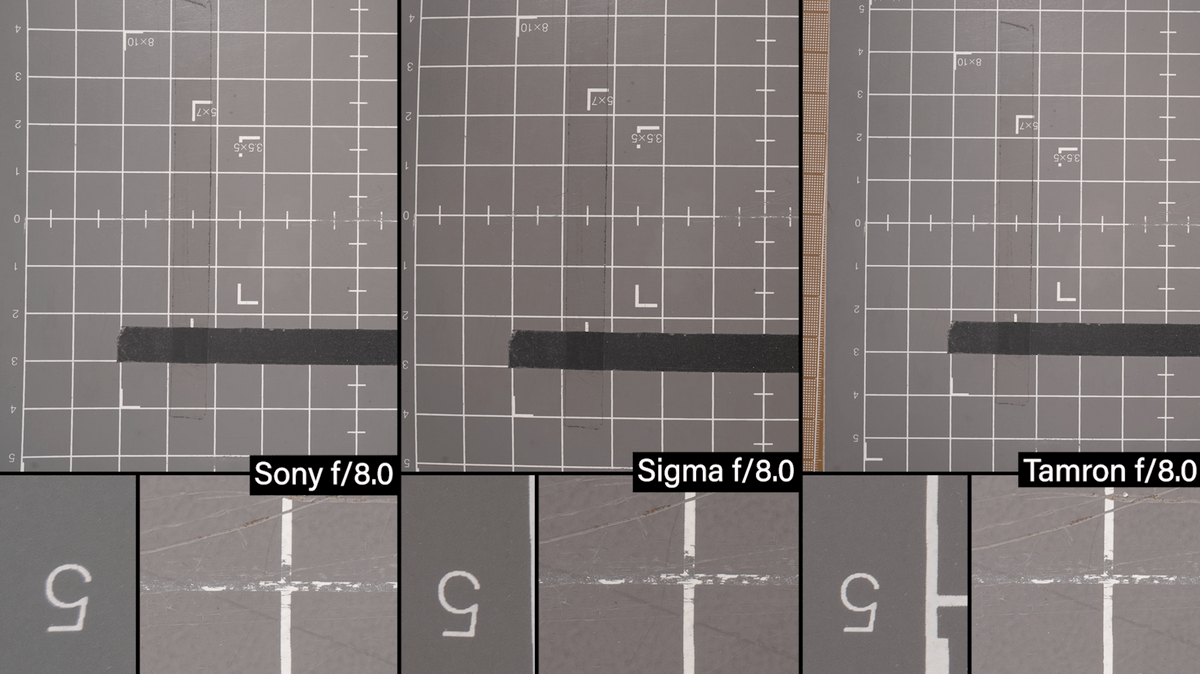 That Sony is hitting its stride that is so interesting. I would have expected it to be better at a slightly more open aperture. The Tamron is very sharp there as well. Yes, at f/8 it looks great on all these. I would say the Sony is still probably losing out on the corner here. But they’re all looking pretty good.
That Sony is hitting its stride that is so interesting. I would have expected it to be better at a slightly more open aperture. The Tamron is very sharp there as well. Yes, at f/8 it looks great on all these. I would say the Sony is still probably losing out on the corner here. But they’re all looking pretty good.
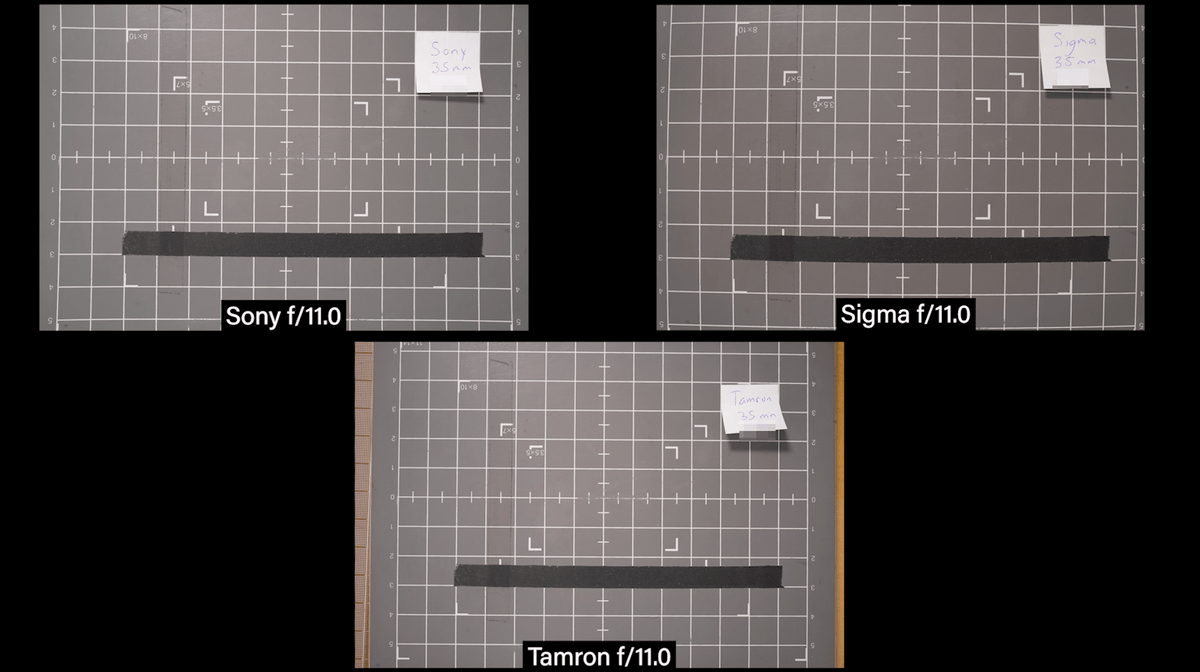 Let’s go to f/11. They are all looking really nice. Let’s see what the corners look like now.
Let’s go to f/11. They are all looking really nice. Let’s see what the corners look like now. 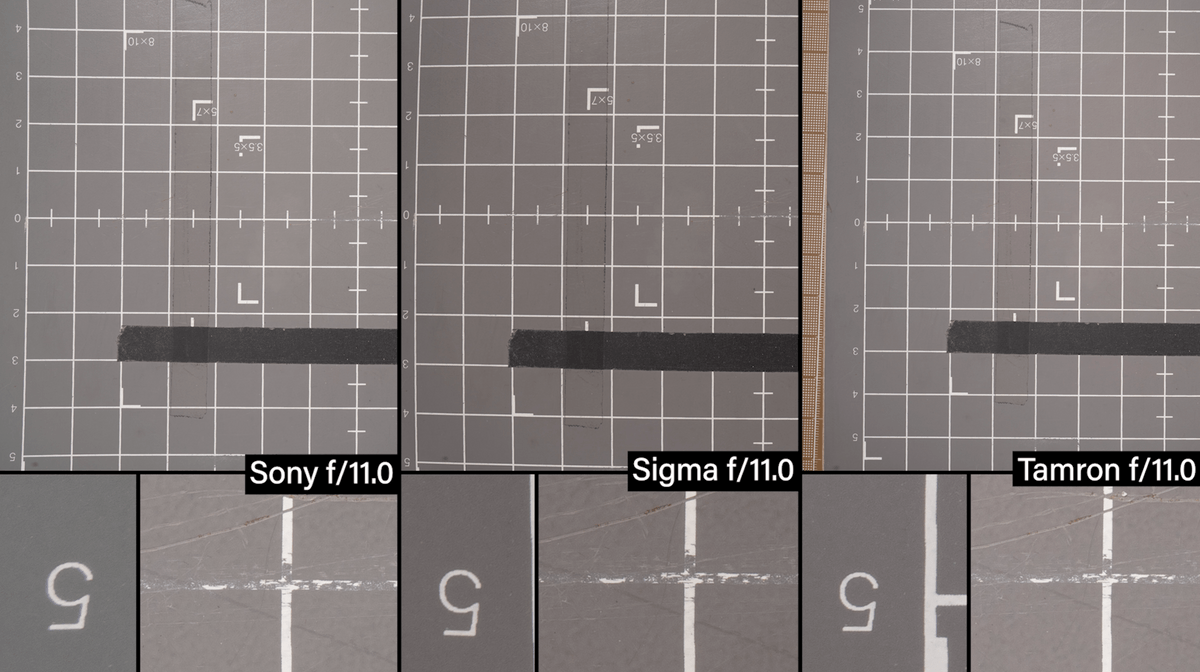 This looks pretty much like f/8 did. It’s interesting because everyone always says don’t shoot at these larger apertures. But f/11 is looking wonderful.
This looks pretty much like f/8 did. It’s interesting because everyone always says don’t shoot at these larger apertures. But f/11 is looking wonderful.
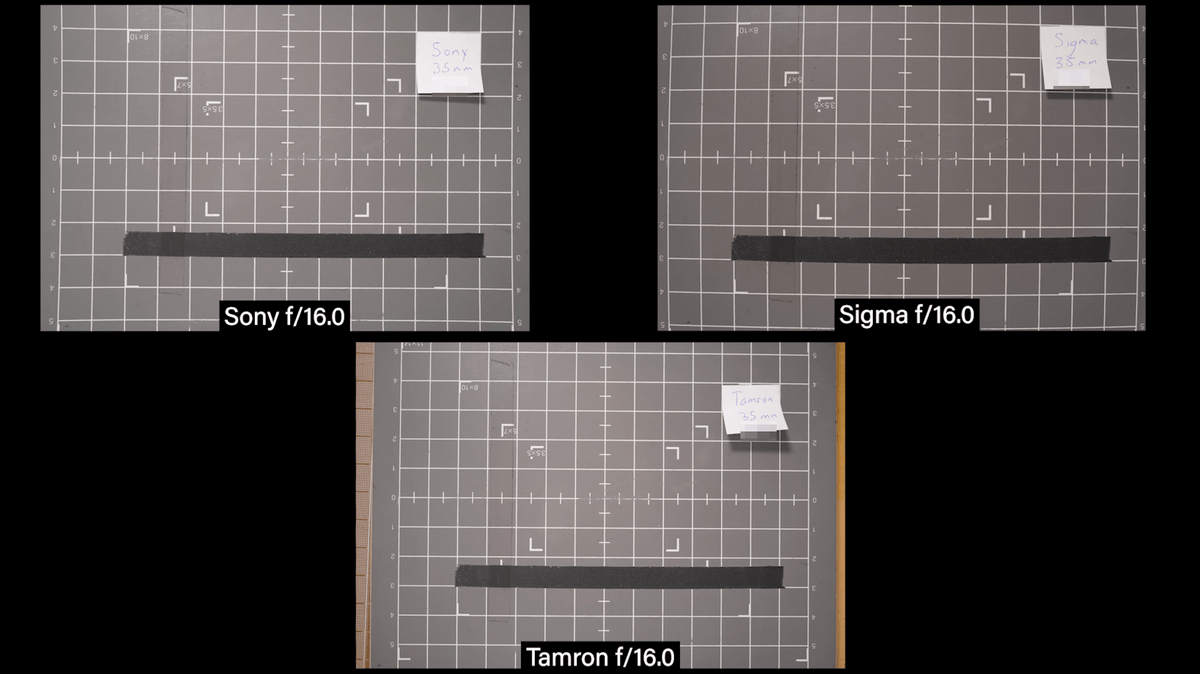 Here is f/16. This is as closed as the Sigma and the Sony can get. And you can see it is softer. These looked much better at f/11.
Here is f/16. This is as closed as the Sigma and the Sony can get. And you can see it is softer. These looked much better at f/11.
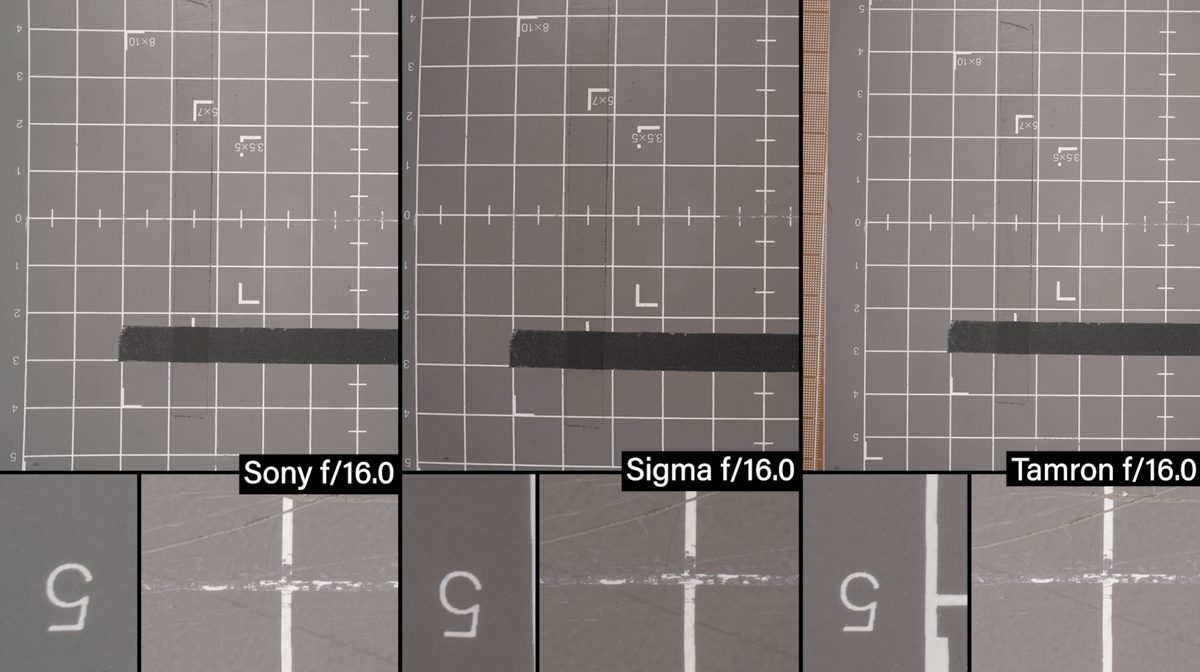
There’s seems to be a big jump between f/11 and f/16. That’s interesting. At this point the Tamron has not opened up all the way. The Tamron goes to f/22. F/16 isn’t peak but it’s better than it was on the more wide open end for some of these. The Tamron is getting a little softer in the center. None of these lenses do well stopped all the way down. But still, not bad.
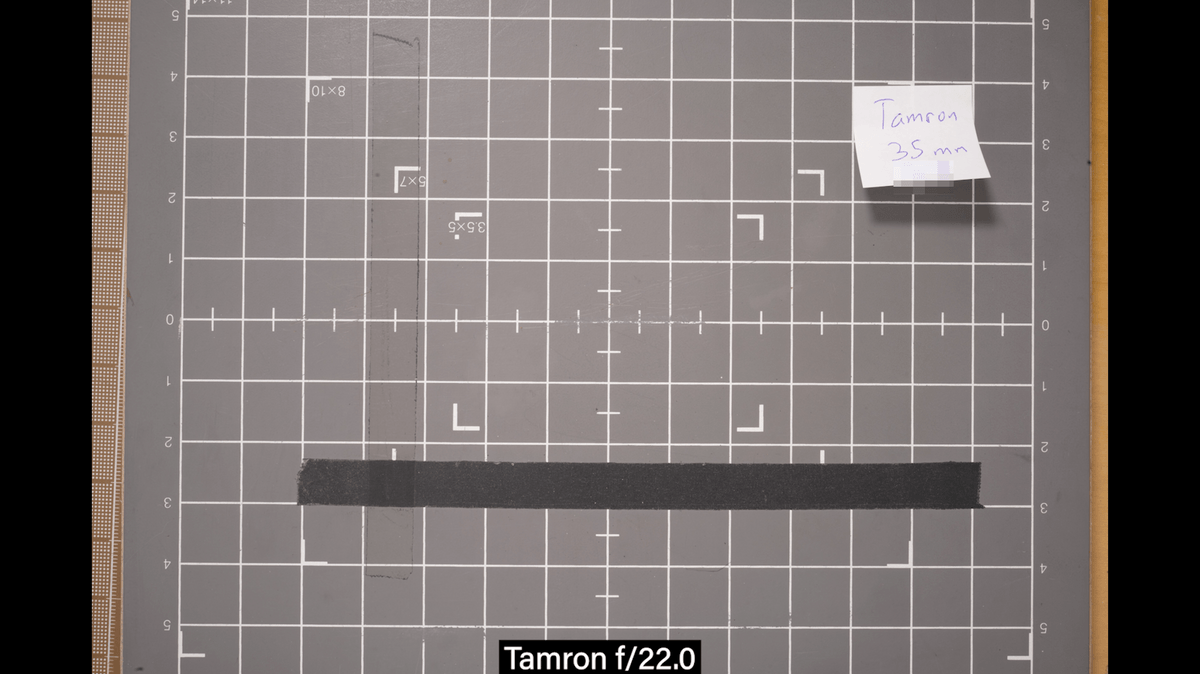 So honestly, the Tamron did really well. I was thinking I’d be saying, “Well, you know the Tamron it’s only $350.” But the Tamron is sharp. I know this because I’ve shot them for years. They are sharp lenses. There are a lot of trade-offs going on here. The Sigma was the sharpest one across the board, for every setting, which is what I’ve heard. I am very surprised at how poorly the Sony did for the price and the fact that it’s a native lens. I mean, at $1500 I would have expected much more out of Sony.
So honestly, the Tamron did really well. I was thinking I’d be saying, “Well, you know the Tamron it’s only $350.” But the Tamron is sharp. I know this because I’ve shot them for years. They are sharp lenses. There are a lot of trade-offs going on here. The Sigma was the sharpest one across the board, for every setting, which is what I’ve heard. I am very surprised at how poorly the Sony did for the price and the fact that it’s a native lens. I mean, at $1500 I would have expected much more out of Sony.
It is interesting because most of the manufacturers these days have spent their money in the zoom range. They do those three, you know, 16mm to 35mm, 24mm-70mm and 70mm -200mm. They do those three lenses, and then they start working on their primes. That’s just because it is what people want. But this lens for Sony needs to be redone. It needs to be brought up to date.
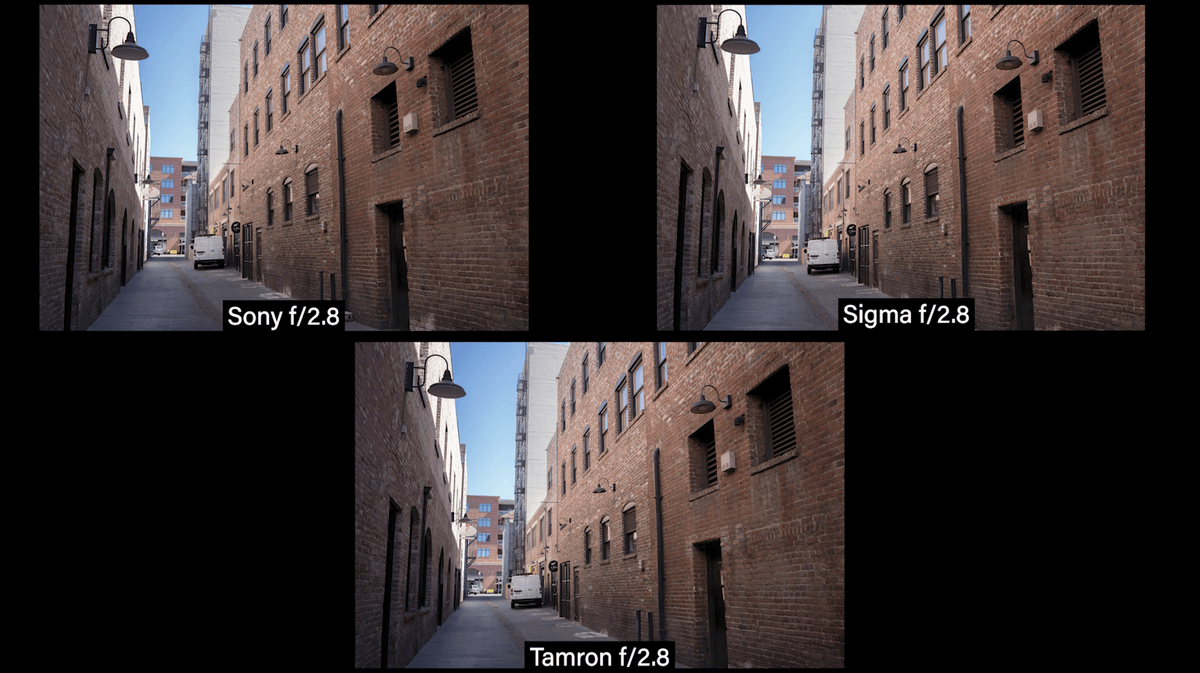 So here we are in the alley and we are at f/2.8 on all these cameras. The Tamron seems like the sky is a little more blue than the others, especially the sigma. The Tamron is not so cyan. The other two seem more cyan and the color rendition of the Tamron is much more blue.
So here we are in the alley and we are at f/2.8 on all these cameras. The Tamron seems like the sky is a little more blue than the others, especially the sigma. The Tamron is not so cyan. The other two seem more cyan and the color rendition of the Tamron is much more blue.
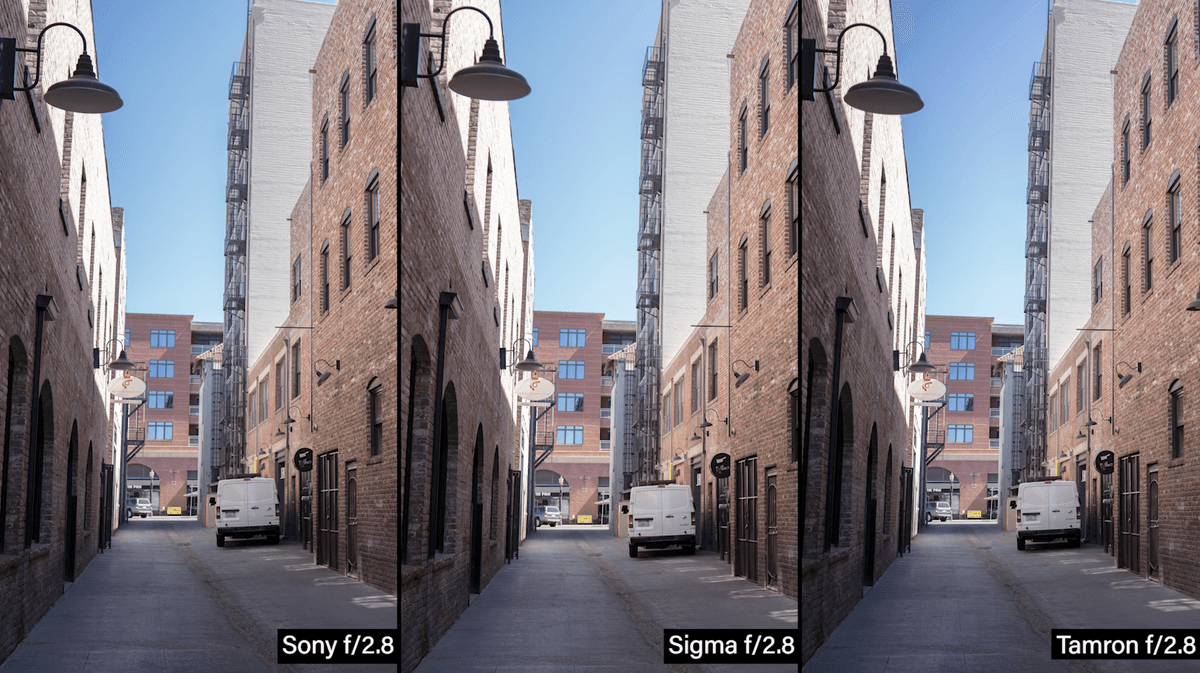 That barrel distortion is pretty obvious when you look at the sigma in a scene like this. You can see that the doorways are bowing. And you do see a little bit of green cast here on the Sony in that white building.
That barrel distortion is pretty obvious when you look at the sigma in a scene like this. You can see that the doorways are bowing. And you do see a little bit of green cast here on the Sony in that white building.
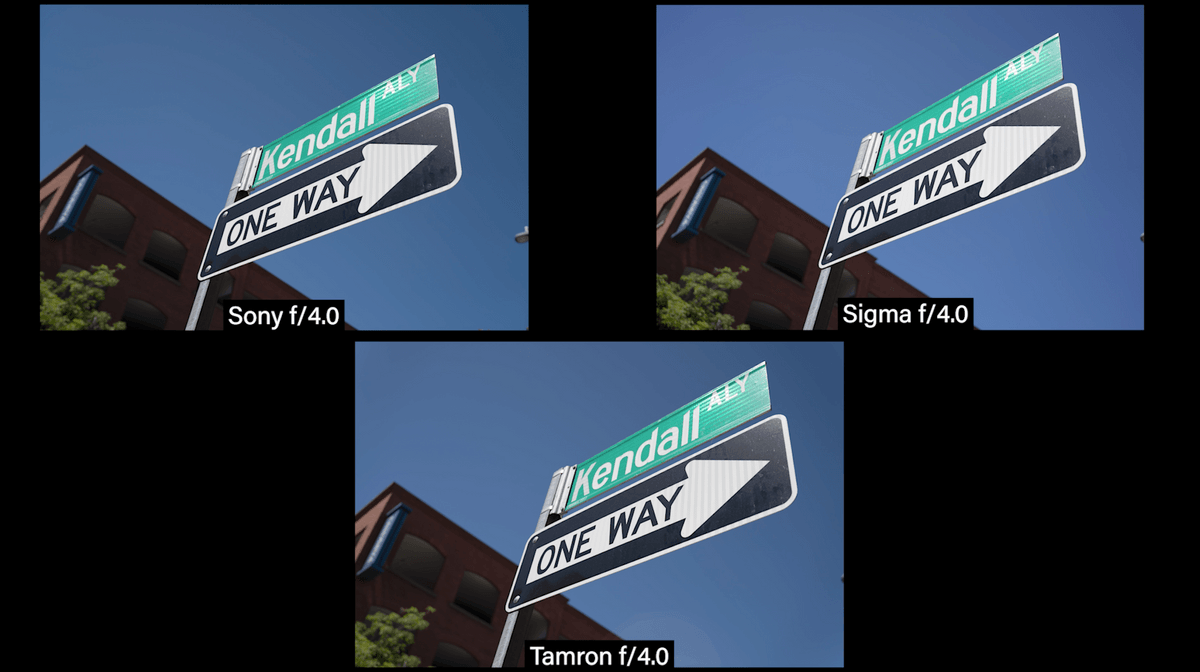 For this next test, we’re looking at color. So we’ve picked a really blue bright scene. It has a green sign and some red brick in there as well. They’re all looking similar. They are all shot the same sensor, the Sony a7R IV. So we’re not looking at the sensor. We’re really looking at the color the lenses are rendering. These are straight out of the box and not color corrected.
For this next test, we’re looking at color. So we’ve picked a really blue bright scene. It has a green sign and some red brick in there as well. They’re all looking similar. They are all shot the same sensor, the Sony a7R IV. So we’re not looking at the sensor. We’re really looking at the color the lenses are rendering. These are straight out of the box and not color corrected.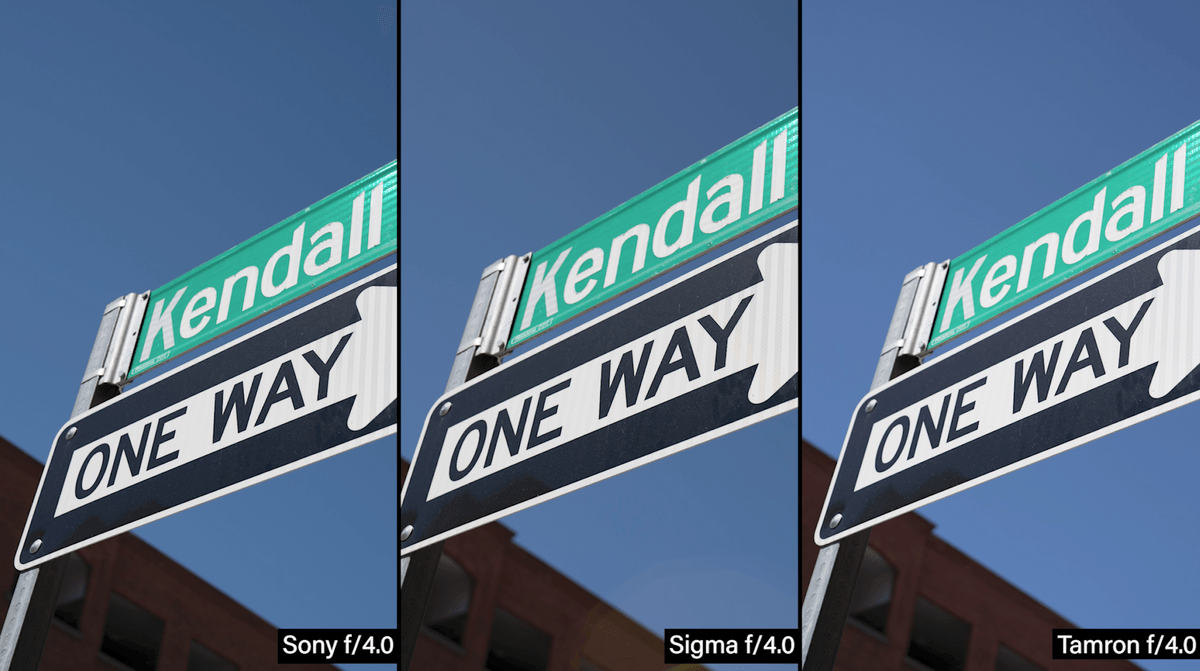
They all vignette slightly in the right hand corner. But if I were to say, as far as an overall clear field of blue, the winner is Tamron. And with the Sigma that green looks a little stronger as well.
You know, talking about vignette, none of these lenses has a super strong vignette. So at f/4 we shouldn’t really see any vignetting. And there does seem to be more vignetting on the Sony than there is on the Sigma. 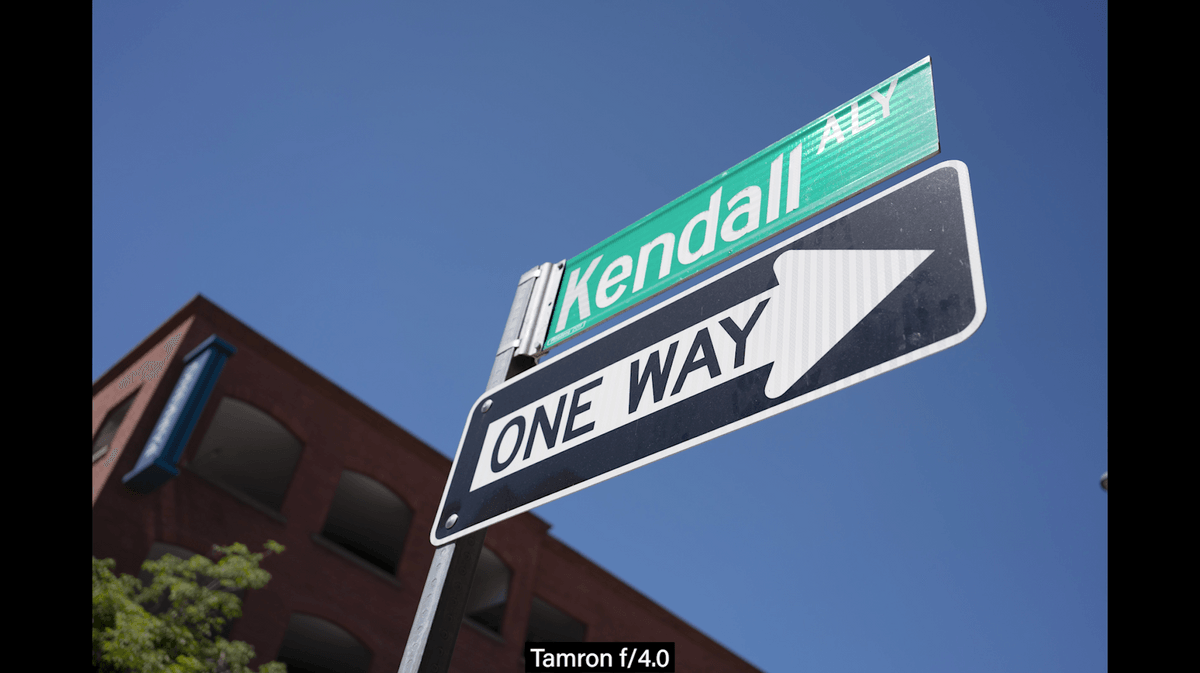 That Tamron just provides more clarity. That’s so interesting. It is interesting, looking at sharpness, we’re at f/4. So they’re all pretty close to peak performance.
That Tamron just provides more clarity. That’s so interesting. It is interesting, looking at sharpness, we’re at f/4. So they’re all pretty close to peak performance. 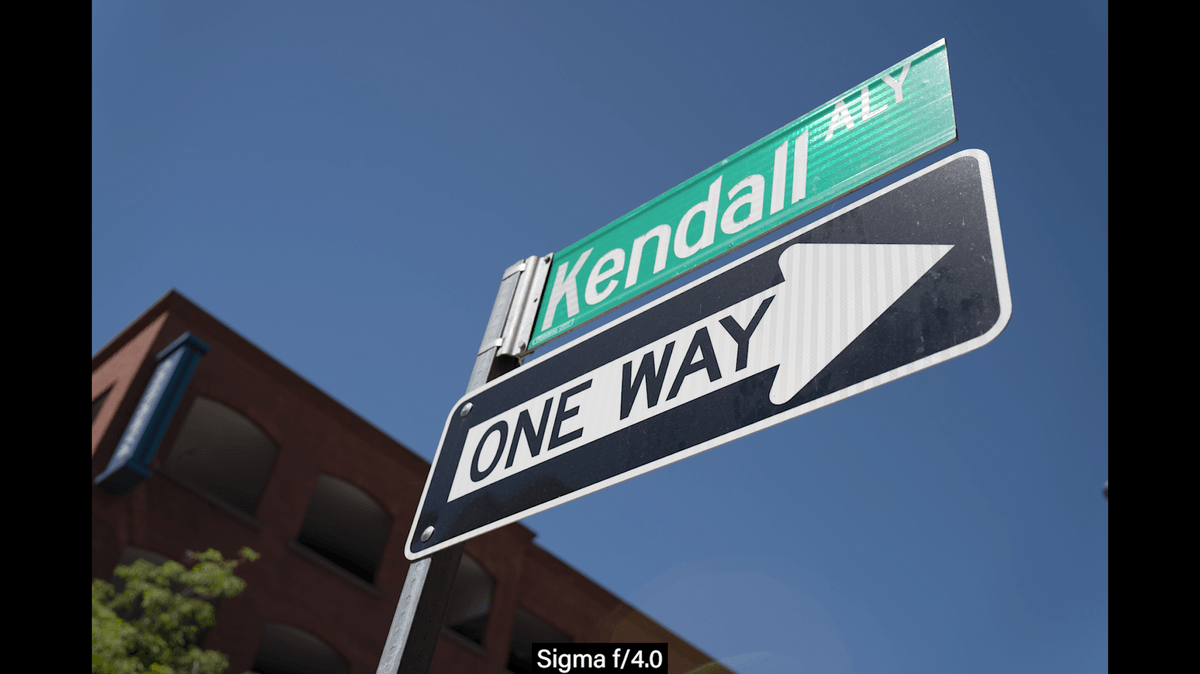 The sigma in terms of sharpness from this test and the other test seems to be the winner. And then Tamron and Sony running up. And maybe an edge in favor of Tamron and in some cases.
The sigma in terms of sharpness from this test and the other test seems to be the winner. And then Tamron and Sony running up. And maybe an edge in favor of Tamron and in some cases.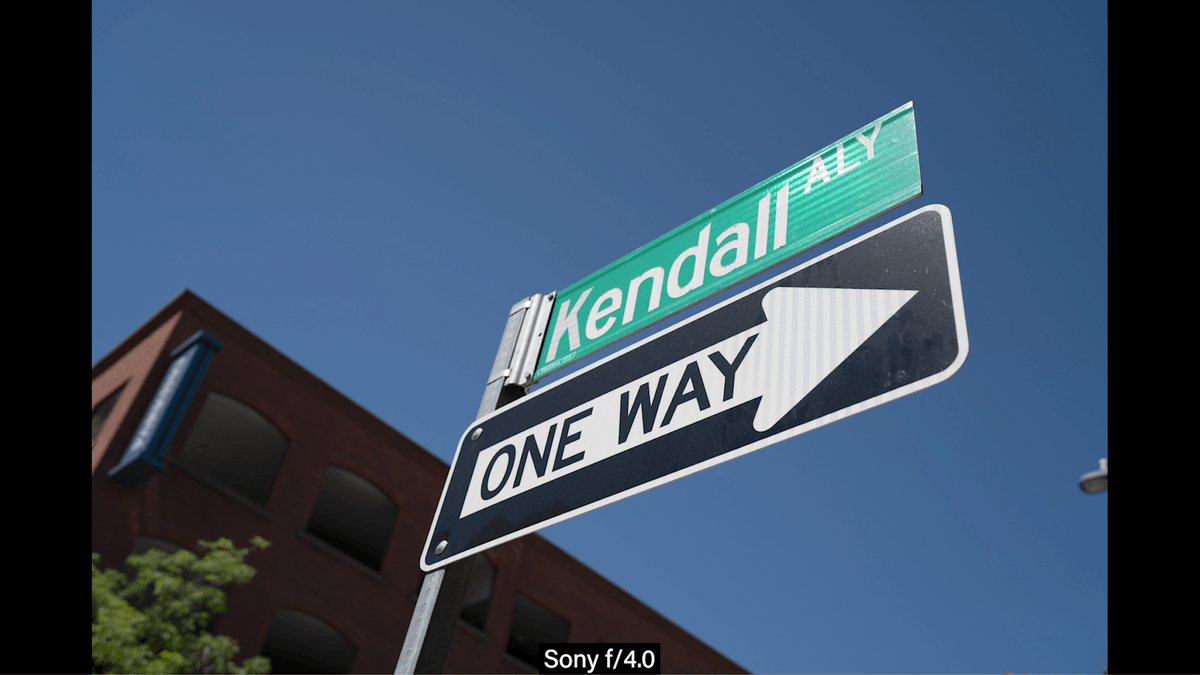
So what have we learned in doing this? I’ve wanted to do this for a long time, especially the comparing the Sigma and the Sony because everyone always complains when we use the Sigma saying we should have used the native lens. That’s the complaint every time. And sometimes it goes the other way. Why did you use that native lens? Native lenses are not always the sharpest. A manufacturer has to produce a lot of lenses for their camera lineup. Some of those lenses get more attention than others. And third party providers sometimes fill in the gaps. I definitely think sigma has done that here. 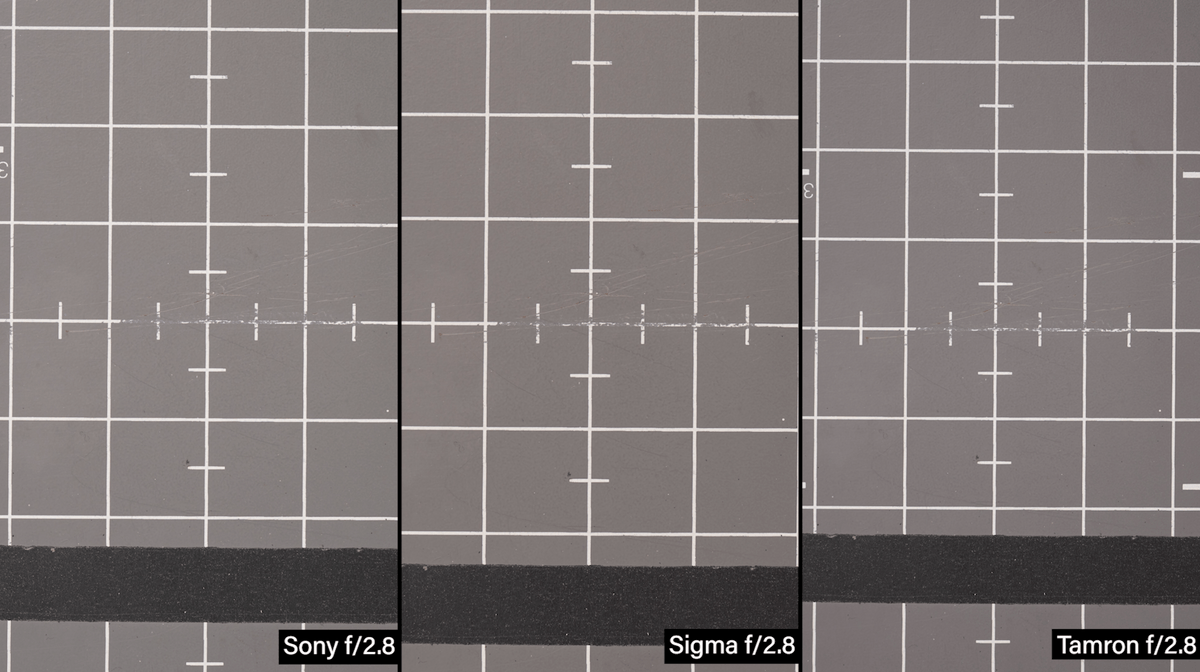 If you’re choosing between the Sigma and the Sony, I pick the Sigma every time even though it has a little more barrel distortion. I would deal with that for the trade off and the resolution is so much better.
If you’re choosing between the Sigma and the Sony, I pick the Sigma every time even though it has a little more barrel distortion. I would deal with that for the trade off and the resolution is so much better.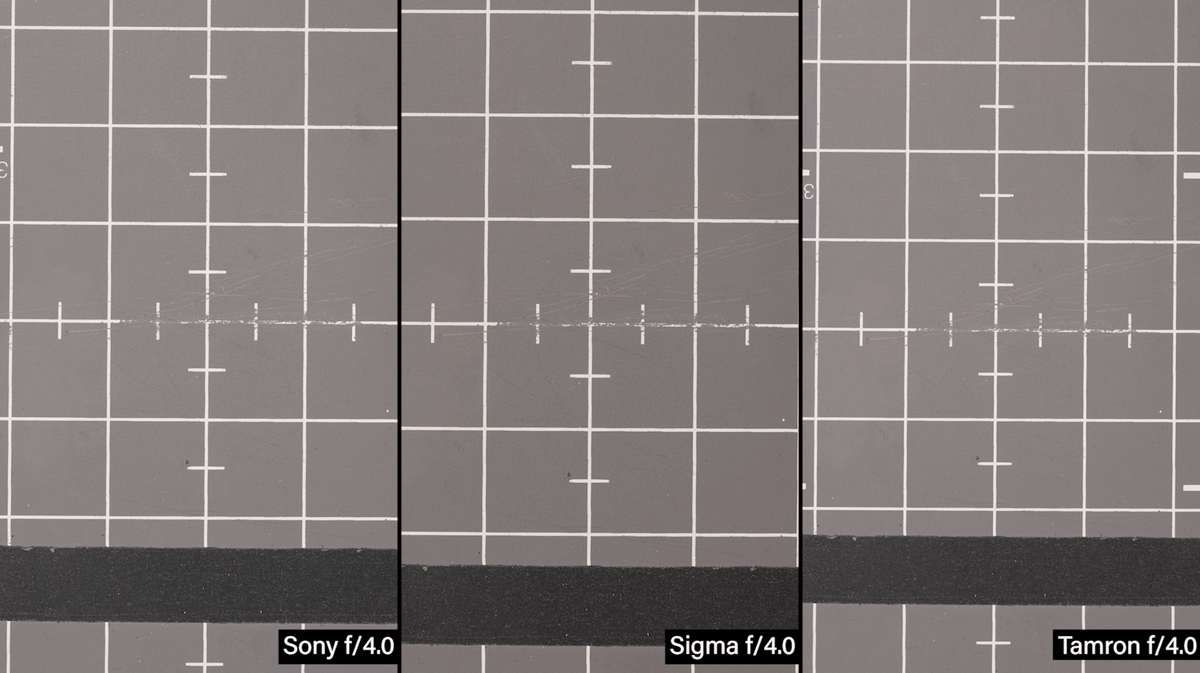
I think what surprised us, and it shouldn’t have but it certainly did, is that small Tamron lens. It’s a very small compact lens. It doesn’t have a lot of the features on the lens you get with the Sigma and Sony. You don’t have the aperture ring on the lens. It’s going to be all internal in the camera.  It doesn’t have an autofocus on and off switch on the lens. That’s going to be internal in the camera as well. And that makes that lens larger for both Sigma and Sony. But man, with a small Sony camera and that small 35mm lens from Tamron it is an incredible travel type camera to carry with you. And it is super sharp and has great color. The Tamron is competing at less than a third, even a fourth the cost.
It doesn’t have an autofocus on and off switch on the lens. That’s going to be internal in the camera as well. And that makes that lens larger for both Sigma and Sony. But man, with a small Sony camera and that small 35mm lens from Tamron it is an incredible travel type camera to carry with you. And it is super sharp and has great color. The Tamron is competing at less than a third, even a fourth the cost.
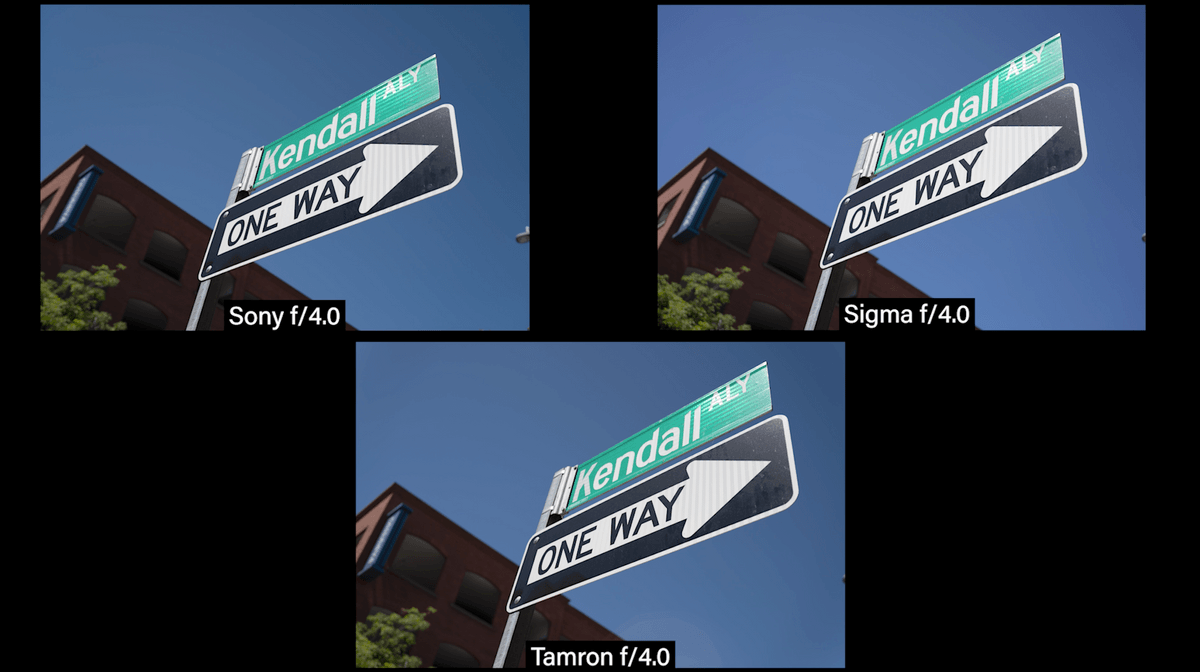 The Sigma has the advantage in terms of aperture range. It can open up by two and a third more stops. So it is a much faster lens. And the focus was, as we saw on the test, the focus was faster.
The Sigma has the advantage in terms of aperture range. It can open up by two and a third more stops. So it is a much faster lens. And the focus was, as we saw on the test, the focus was faster.
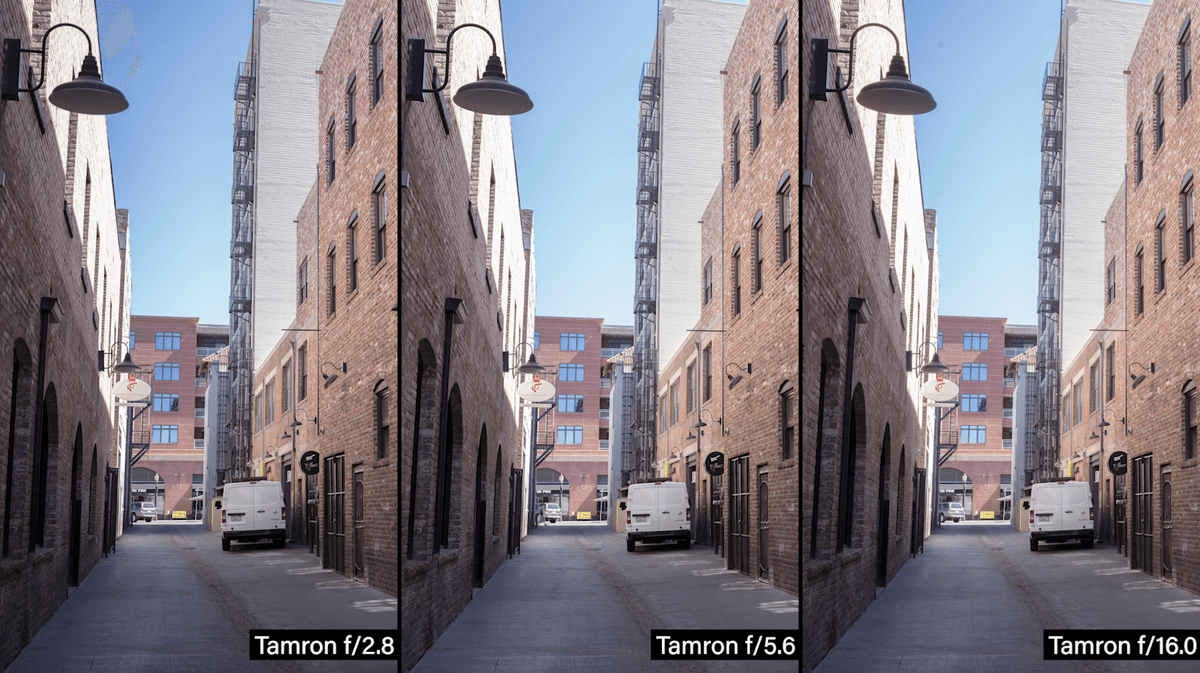 We really wanted to answer these questions so we can say with confidence why we’re going to use a Sigma. And when we use the Tamron lenses on our format comparison last week there’s no reason to be embarrassed about sharpness with this lens.People were saying, “Oh, you use a 35mmTamron lens, it’s not going to be sharp.” In this case it was way sharper than the name brand lens.
We really wanted to answer these questions so we can say with confidence why we’re going to use a Sigma. And when we use the Tamron lenses on our format comparison last week there’s no reason to be embarrassed about sharpness with this lens.People were saying, “Oh, you use a 35mmTamron lens, it’s not going to be sharp.” In this case it was way sharper than the name brand lens.
My takeaway is that with Sony it is time to make a G master lens and in that 35mm category. It’s just not holding up. It’s an old lens technology and it needs to be updated.
So if you want an inexpensive small form factor that Tamron delivers great sharpness and is a great lens. If you want a faster lens that is going to work in lower light situations like event photography, you may want to look towards a sigma. I don’t think the Sony really is the choice.
I was surprised when the Sigma showed so much barrel distortion.
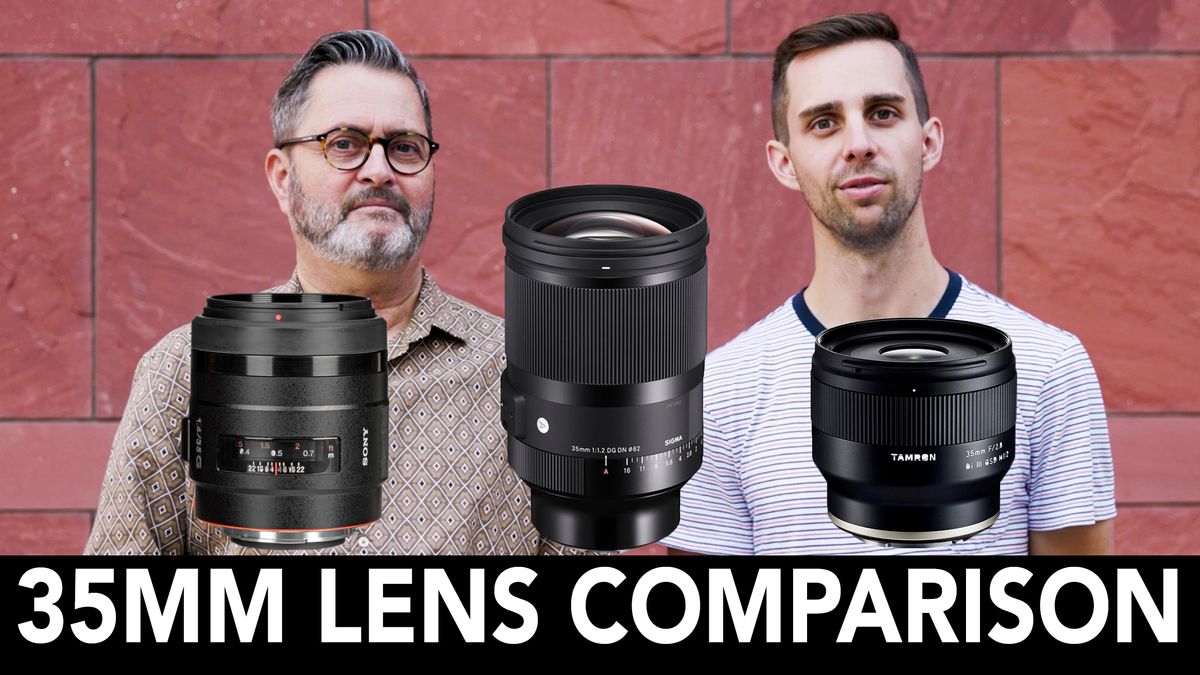 There’s a look at those three lenses. I hope you learned something. Leave us some comments on our YouTube Channel. Everyone who has a Sony 35mm tell us how much we missed the mark on this one. We’d love to hear from you.
There’s a look at those three lenses. I hope you learned something. Leave us some comments on our YouTube Channel. Everyone who has a Sony 35mm tell us how much we missed the mark on this one. We’d love to hear from you.
 Please subscribe to The Slanted Lens on YouTube. That keeps us going here. We need your support. Keep those cameras rollin’ and keep on clickin’.
Please subscribe to The Slanted Lens on YouTube. That keeps us going here. We need your support. Keep those cameras rollin’ and keep on clickin’.
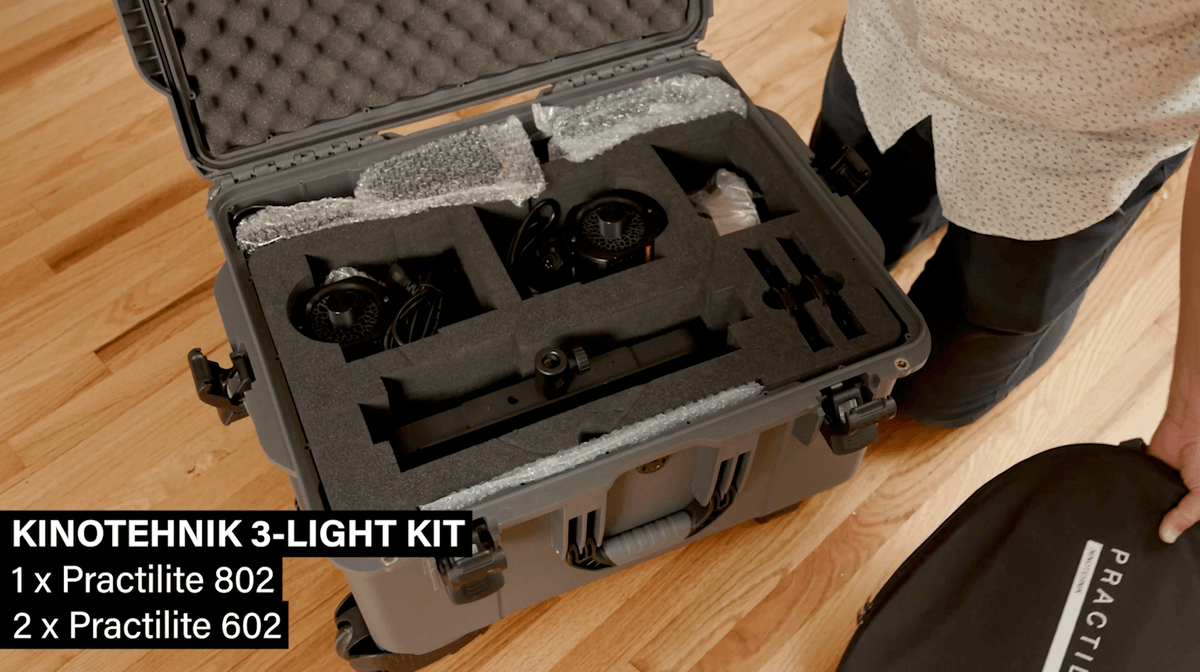 The Kinotehnik Practilite 802 comes with two diffusion. The diffusion increases the area of coverage from a 30 to 60 degree.
The Kinotehnik Practilite 802 comes with two diffusion. The diffusion increases the area of coverage from a 30 to 60 degree. 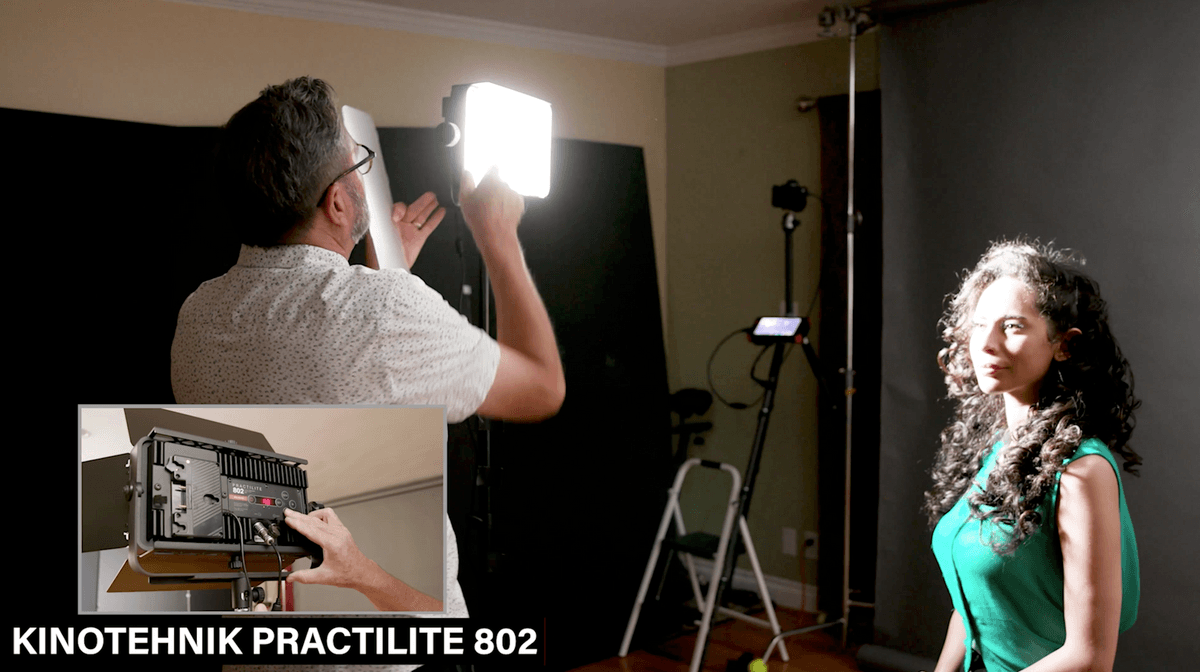 I love this combination of having a LED panel and then two of these for Fresnel lights. These lights have a smart sync which means you can use your smart phone to change these fixtures by themselves.
I love this combination of having a LED panel and then two of these for Fresnel lights. These lights have a smart sync which means you can use your smart phone to change these fixtures by themselves. 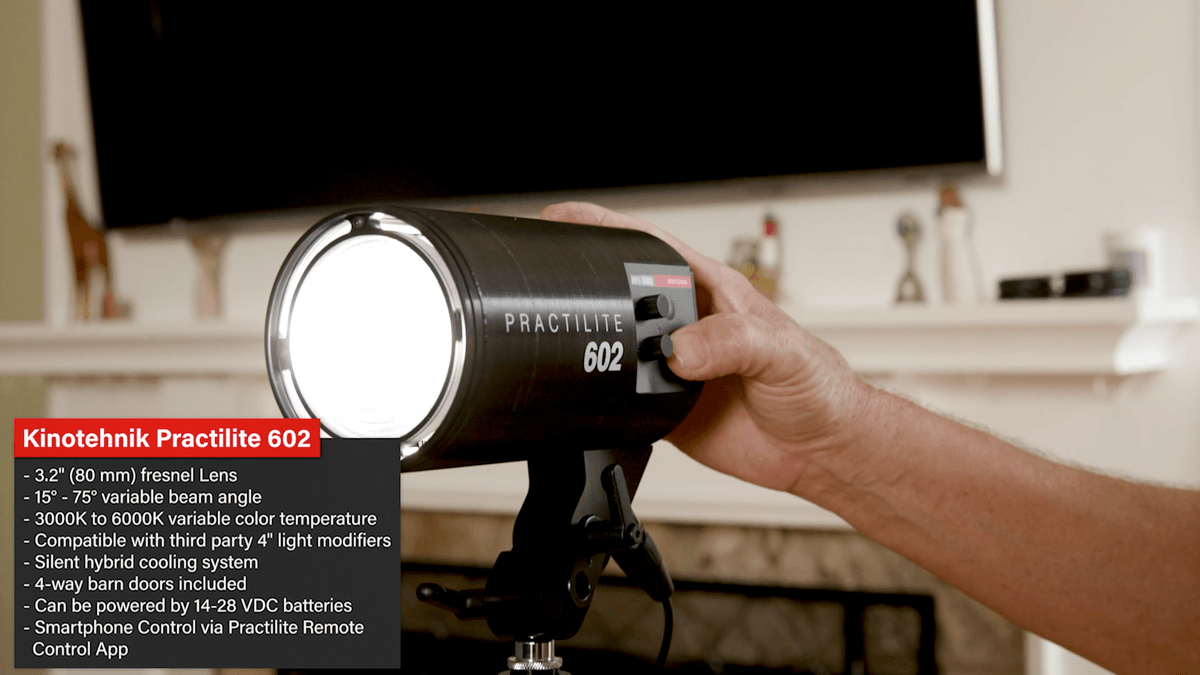 Or when you click on it and link them they’re locked together. This allows you to change both lights at the same time.
Or when you click on it and link them they’re locked together. This allows you to change both lights at the same time.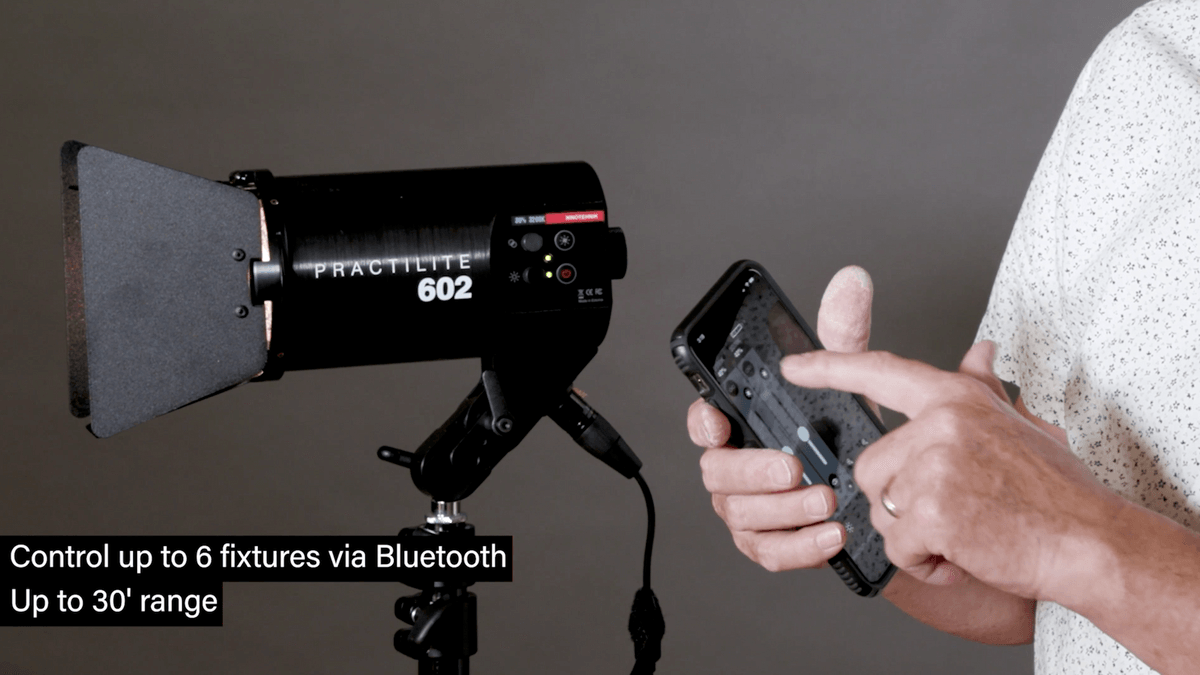 This 3 light LED set is a great kit to work with! Kinotehnik.com
This 3 light LED set is a great kit to work with! Kinotehnik.com
Leave a Reply